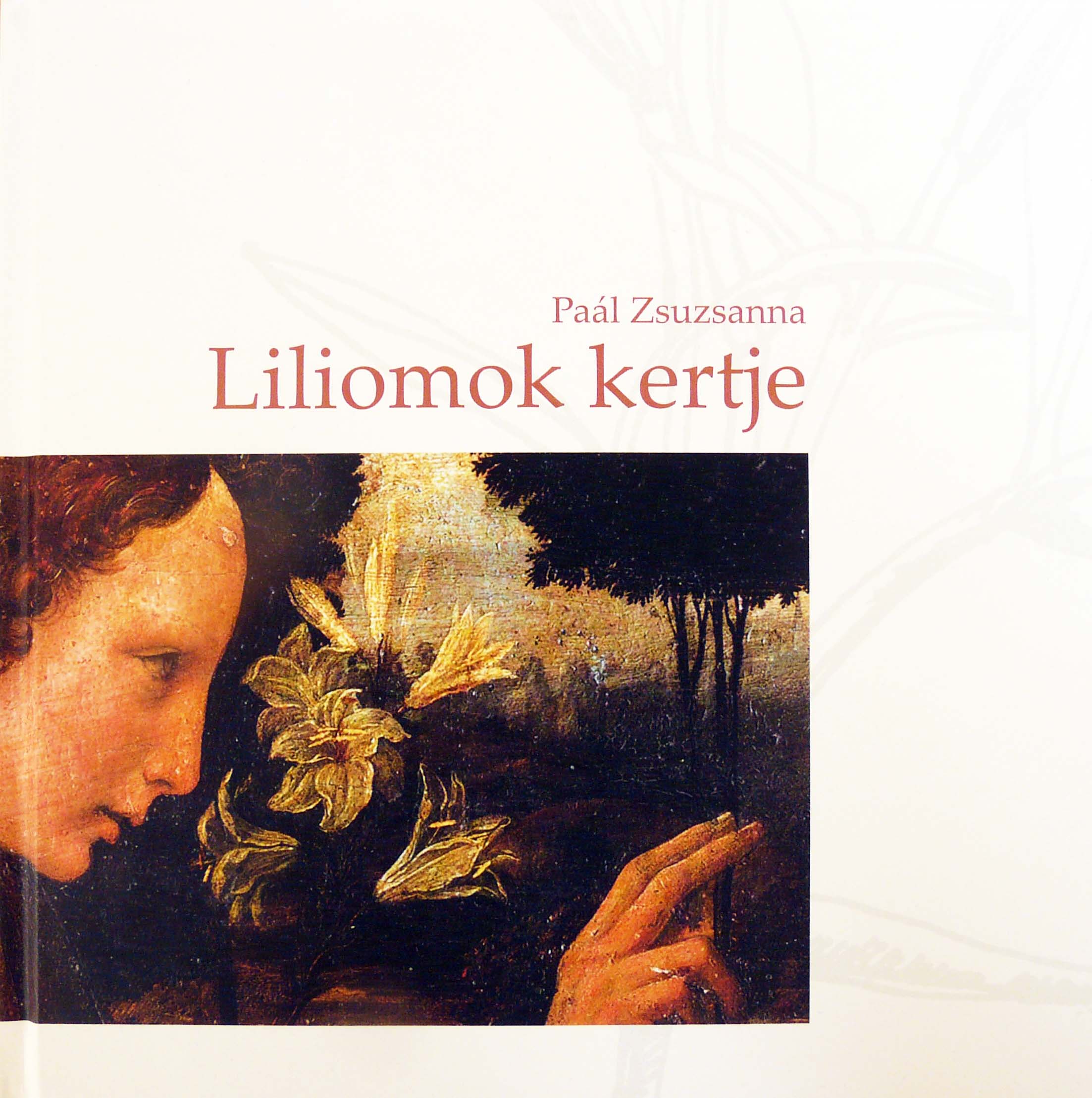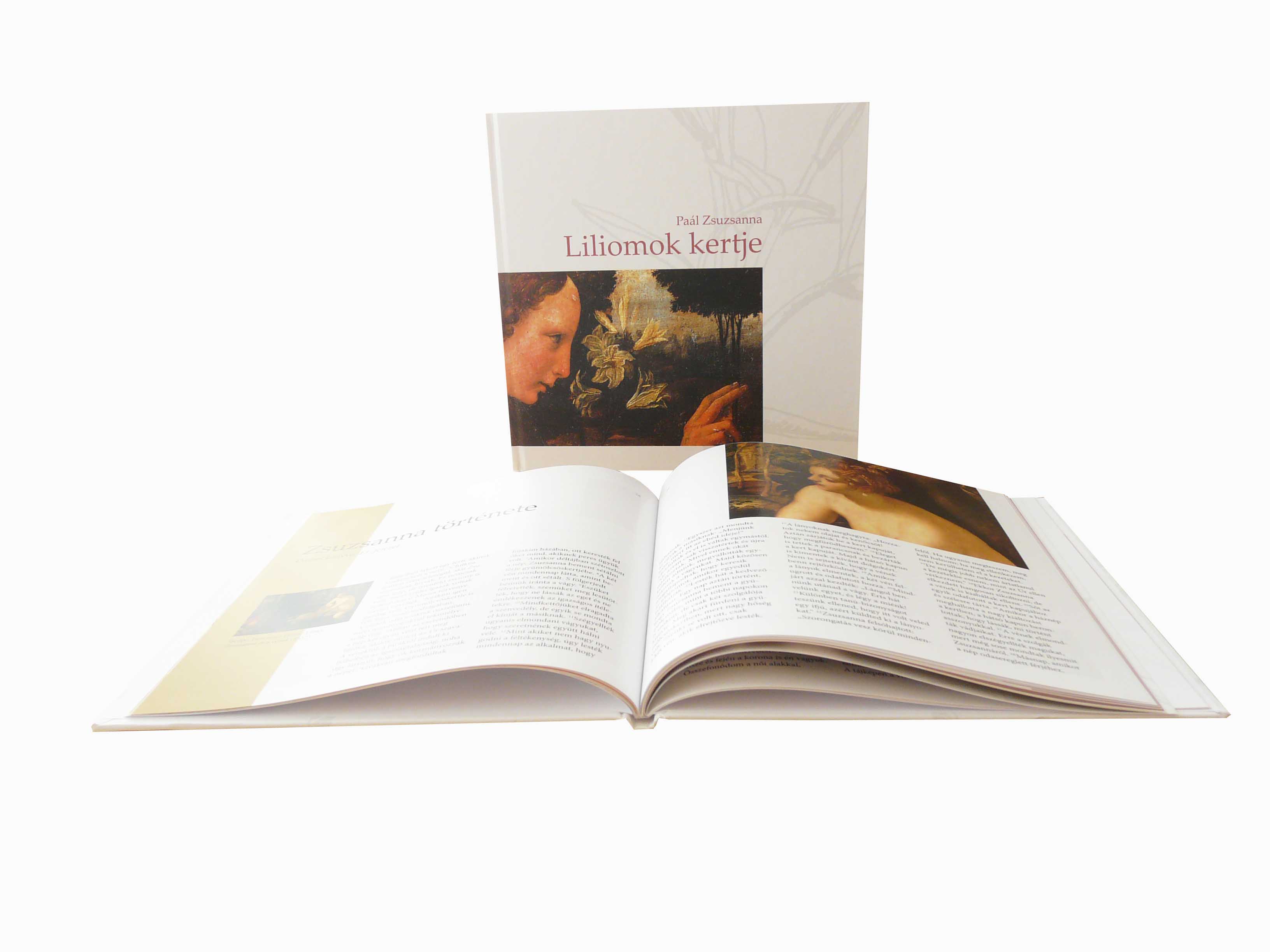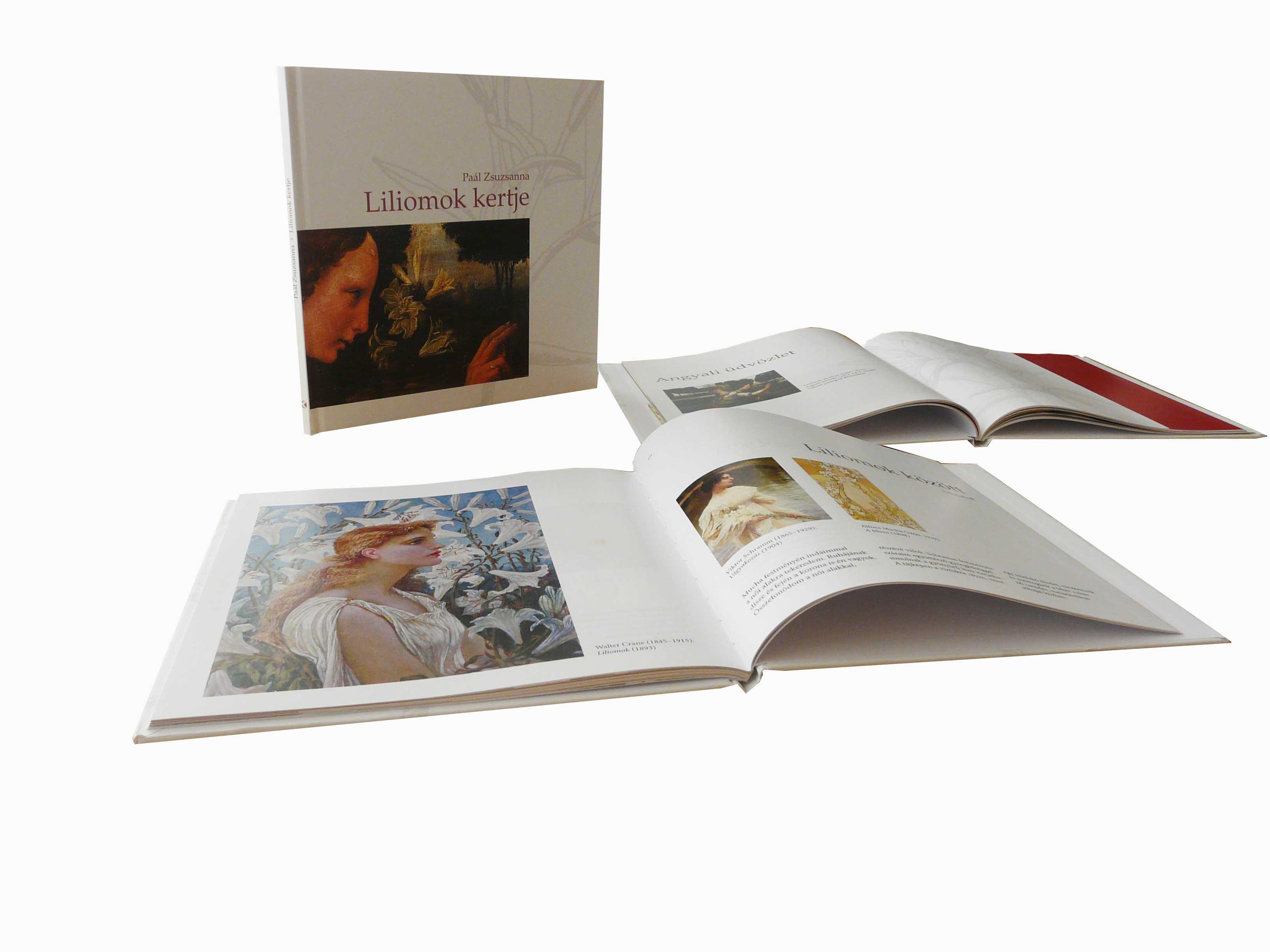
Garden of Lilies. As already the title suggests, we get a ticket to a secluded and internal world. The embodiment of the Hebrew “Susan” and the Latin “Lilium” spring to life to show us the sign language of a wonderful flower. This picture book is to justify that we cannot get to know this world objectively or even subjectively – only in human connections where love provides space for real knowledge. This idea is supported by the beautiful and authentic confessions of the embodied lily born in the relationship with saints. (Dr. Sándor Békési)

The genre of Garden of Lilies by Zsuzsanna Paál is hard to define. Its internalization is an intellectual experience, on the one hand, since she delineates different semantic layers and representational forms of the lily motif in fine art and literature. On the other hand, it is an aesthetic experience for its viewers because she is applying a fine taste for literature and a great amount of lyricsm. Above all this, it is a spiritual experience making us stop, contemplate and mediate. (Dániel Horváth)

Everyone who knows the author also knows that the way she views the world outside is astonishing, unique and extraordinary. With one word: “artistic” but not in the sense of being too abstract. Artistic because it observes underlying meanings and opens up and discovers points of view that could be easily ignored. It is true for the main concepts of the book as well as for its form and language and the special effects this work triggers in us must stem from this originality. (Dániel Horváth)

This Garden of Lilies is rich and luxuriant and during its discovery readers will have a great adventure since we will realise that this motif is so much present in our lives, as well. At least, the author of these lines was reminded of his most intimate memories by each paragraph of the book. Since we can find a lily in scouts’ badges, coats of arms of high schools and even in the memory of a real garden. It is an interesting mechanism because our experience becomes truly private in its own individual way. What interlaces the intellectual, aesthetic and spiritual layers of this volume is the unusually feminine and lyrical voice which intones sometimes from the very perspective of the flower and other times from an indefinable narrator. (Dániel Horváth)

Garden of Lilies – an ambiguous title. Because it can be a garden in which there are lilies and it can be a garden owned by lilies. In this latter case, what can be found in the garden? Maybe us, human beings? Our feelings? Our belief system? Our culture? This volume by Zsuzsanna Paál provides space for both readings. It can be read in one go. In one refreshing and purifying go. And since we have only few opportunities to have such experiences in our everyday life, it is worth reading it more than once. (Dániel Horváth)
Zsuzsanna Paál: Garden of Lilies
Kossuth Kiadó (Publishing House)
2019
In this book, Zsuzsanna Paál brings lilies to life and asks them to speak about themselves, calling our attention to the numerous natural and artistic presentations, meanings and symbols of this flower.
Cultural botanics: The volume is a lyrical and sensitive artwork with beautiful illustrations. The protagonist of this work is a flower that is embodied, addressed with different roles and discussed in the context of various paintings and works of art. There are many different traits and symbols underlying in one and the same flower. A unique perspective of Zsuzsanna Paál with an extraordinary interpretation of contemplating on paintings.